The Union Public Service Commission (UPSC) conducts NDA entrance exam for selection of candidates into training academies of Indian Navy, Indian Military and Air Force. This exam is conducted twice a year and popularly known as NDA I and NDA II. Candidates who cleared the written test have to appear further for SSB interview & medical test. Let’s explore more interesting facts about NDA entrance exam.
NDA Eligibility Criteria
Nationality Criteria
Unmarried male should satisfy one of the following nationality criteria:
- a citizen of India, or
- a subject of Nepal, or
- a subject of Bhutan, or
- a Tibetan refugee who came India before the 1st January, 1962 with the intention of permanently settling in India, or
- a person of Indian origin who has migrated from Pakistan, Burma, Sri Lanka and East African Countries of Kenya, Uganda, the United Republic of Tanzania, Zambia, Malawi, Zaire and Ethiopia or Vietnam with the purpose of permanently settling in India.
Age Criteria: Candidates’ age must lie in between 16.5 – 19.5 years.
Marital Status: Unmarried Male Candidates
Minimum Education
| For Army Wing of National Defense Academy | 12th Class pass |
| For Air Force and Naval Wings of National Defence Academy and for the 10+2 Cadet Entry Scheme at the Indian Naval Academy | 12th Class pass with Physics & Mathematics |
*Appearing candidates who are waiting for their result can also apply.
Physical Fitness: Candidates must meet the physical standards for admission.
NDA Application Form
Candidates need to apply online for NDA entrance exam by using the website upsconline.nic.in. There are two parts of application form i.e. part I and Part II which you need to complete and make payment of application fee. In case you have filled and submitted multiple applications then applications with higher RID will be accepted. Ensure the application with higher RID is complete in all aspects.
Documents Required
- One photo ID viz. Aadhar Card/ Voter Card/ PAN Card/ Passport/ Driving License/ School Photo ID/Any other photo ID Card issued by the State/Central Government.
- Photograph and signature duly scanned in the .jpg format. The file size should be in between 20KB and 300KB.
Application Fee
- Candidates of all categories need to pay 100.
- Candidates belonging to SC/ ST/ NCOs/ Sons of JCOs/ ORS categories are exempted from paying the application fee.
Exam Pattern
Please go through important information regarding NDA exam pattern:
| Subject | Code | Exam Duration | Marks |
| Mathematics | 01 | 2½ Hours | 300 |
| General Ability Test | 02 | 2½ Hours | 600 |
| Total | 600 | ||
| SSB Test/Interview | 900 |
The exam is conducted in Pen and paper mode. Candidates have to write the paper by their own hand.
Both the papers will comprise of only objective type questions. Both the papers are bilingual in English and Hindi.
In the question papers, wherever required, questions involving the metric system of Weights and Measures only will be applied.
You are not allowed to bring or use calculator or Mathematical or logarithmic table to answer objective type papers.
NDA Syllabus
Please go through the syllabus for paper I and 2:
Paper 1(Mathematics) Syllabus
- ALGEBRA
Concept of set, operations on sets, Venn diagrams. De Morgan laws, Cartesian product, relation, equivalence relation.
Representation of real numbers on a line. Complex numbers—basic properties, modulus, argument, cube roots of unity. Binary system of numbers. Conversion of a number in decimal system to binary system and vice-versa. Arithmetic, Geometric and Harmonic progressions. Quadratic equations with real coefficients. Solution of linear inequations of two variables by graphs. Permutation and Combination. Binomial theorem and its applications. Logarithms and their applications.
- MATRICES AND DETERMINANTS :
Types of matrices, operations on matrices. Determinant of a matrix, basic properties of determinants. Adjoint and inverse of a square matrix, Applications-Solution of a system of linear equations in two or three unknowns by Cramer’s rule and by Matrix Method.
- TRIGONOMETRY :
Angles and their measures in degrees and in radians. Trigonometrical ratios. Trigonometric identities Sum and difference formulae. Multiple and Sub-multiple angles. Inverse trigonometric functions. Applications-Height and distance, properties of triangles.
- ANALYTICAL GEOMETRY OF TWO AND THREE DIMENSIONS:
Rectangular Cartesian Coordinate system. Distance formula. Equation of a line in various forms. Angle between two lines. Distance of a point from a line. Equation of a circle in standard and in general form. Standard forms of parabola, ellipse and hyperbola. Eccentricity and axis of a conic. Point in a three dimensional space, distance between two points. Direction Cosines and direction ratios. Equation two points. Direction Cosines and direction ratios. Equation of a plane and a line in various forms. Angle between two lines and angle between two planes. Equation of a sphere.
- DIFFERENTIAL CALCULUS :
Concept of a real valued function–domain, range and graph of a function. Composite functions, one to one, onto and inverse functions. Notion of limit, Standard limits—examples. Continuity of functions—examples, algebraic operations on continuous functions. Derivative of function at a point, geometrical and physical interpretation of a derivative—applications. Derivatives of sum, product and quotient of functions, derivative of a function with respect to another function, derivative of a composite function. Second order derivatives. Increasing and decreasing functions. Application of derivatives in problems of maxima and minima.
Process: How to join PARA SF?
- INTEGRAL CALCULUS AND DIFFERENTIAL EQUATIONS
ntegration as inverse of differentiation, integration by substitution and by parts, standard integrals involving algebraic expressions, trigonometric, exponential and hyperbolic functions.
Evaluation of definite integrals—determination of areas of plane regions bounded by curves—applications.
Definition of order and degree of a differential equation, formation of a differential equation by examples. General and particular solution of a differential equations, solution of first order and first degree differential equations of various types—examples. Application in problems of growth and decay.
- VECTOR ALGEBRA :
Vectors in two and three dimensions, magnitude and direction of a vector. Unit and null vectors, addition of vectors, scalar multiplication of a vector, scalar product or dot product of two vectors. Vector product or cross product of two vectors. Applications—work done by a force and moment of a force and in geometrical problems
- STATISTICS AND PROBABILITY :
Statistics : Classification of data, Frequency distribution, cumulative frequency distribution—examples. Graphical representation—Histogram, Pie Chart, frequency polygon—examples. Measures of Central tendency—Mean, median and mode. Variance and standard deviation—determination and comparison. Correlation and regression. Probability : Random experiment, outcomes and associated sample space, events, mutually exclusive and exhaustive events, impossible and certain events. Union and Intersection of events. Complementary, elementary and composite events. Definition of probability—classical and statistical—examples. Elementary theorems on probability—simple problems. Conditional probability, Bayes’ theorem—simple problems. Random variable as function on a sample space. Binomial distribution, examples of random experiments giving rise to Binominal distribution.
PAPER-2 GENERAL ABILITY TEST Syllabus
Part ‘A’—ENGLISH (Maximum Marks—200)
The question paper in English will be designed to test the candidate’s understanding of English and workman like use of words. The syllabus covers various aspects like : Grammar and usage, vocabulary, comprehension and cohesion in extended text to test the candidate’s proficiency in English.
Part ‘B’—GENERAL KNOWLEDG (Maximum Marks—400)
The question paper on General Knowledge will broadly cover the subjects : Physics, Chemistry, General Science, Social Studies, Geography and Current Events. -The syllabus given below is designed to indicate the scope of these subjects included in this paper. The topics mentioned are not to be regarded as exhaustive and questions on topics of similar nature not specifically mentioned in the syllabus may also be asked. Candidate’s answers are expected to show their knowledge and intelligent understanding of the subject.
Section ‘A’ (Physics)
Physical Properties and States of Matter, Mass, Weight, Volume, Density and Specific Gravity, Principle of Archimedes, Pressure Barometer. Motion of objects, Velocity and Acceleration, Newton’s Laws of Motion, Force and Momentum, Parallelogram of Forces, Stability and Equilibrium of bodies, Gravitation, elementary ideas of work, Power and Energy. Effects of Heat, Measurement of Temperature and Heat, change of State and Latent Heat, Modes of transference of Heat. Sound waves and their properties, Simple musical instruments. Rectilinear propagation of Light, Reflection and refraction. Spherical mirrors and Lenses, Human Eye. Natural and Artificial Magnets, Properties of a Magnet, Earth as a Magnet. Static and Current Electricity, conductors and Non-conductors, Ohm’s Law, Simple Electrical Circuits, Heating, Lighting and Magnetic effects of Current, Measurement of Electrical Power, Primary and Secondary Cells, Use of X-Rays. General Principles in the working of the following: Simple Pendulum, Simple Pulleys, Siphon, Levers, Balloon, Pumps, Hydrometer, Pressure Cooker, Thermos Flask, Gramophone, Telegraphs, Telephone, Periscope, Telescope, Microscope, Mariner’s Compass; Lightening Conductors, Safety Fuses.
Check entrance exams after class 12th
Section ‘B’ (Chemistry)
Physical and Chemical changes. Elements, Mixtures and Compounds, Symbols, Formulae and simple Chemical Equations, Law of Chemical Combination (excluding problems). Properties of Air and Water. Preparation and Properties of Hydrogen, Oxygen, Nitrogen and Carbondioxide, Oxidation and Reduction. Acids, bases and salts. Carbon—different forms. Fertilizers—Natural and Artificial. Material used in the preparation of substances like Soap, Glass, Ink, Paper, Cement, Paints, Safety Matches and Gun-Powder. Elementary ideas about the structure of Atom, Atomic Equivalent and Molecular Weights, Valency.
Section ‘C’ (General Science)
Difference between the living and non-living. Basis of Life—Cells, Protoplasms and Tissues. Growth and Reproduction in Plants and Animals. Elementary knowledge of Human Body and its important organs. Common Epidemics, their causes and prevention. Food—Source of Energy for man. Constituents of food, Balanced Diet. The Solar System—Meteors and Comets, Eclipses. Achievements of Eminent Scientists.
Section ‘D’ (History, Freedom Movement etc.)
A broad survey of Indian History, with emphasis on Culture and Civilisation. Freedom Movement in India. Elementary study of Indian Constitution and Administration. Elementary knowledge of Five Year Plans of India. Panchayati Raj, Co-operatives and Community Development. Bhoodan, Sarvodaya, National Integration and Welfare State, Basic Teachings of Mahatma Gandhi. Forces shaping the modern world; Renaissance, Exploration and Discovery; War of American Independence. French Revolution, Industrial Revolution and Russian Revolution. Impact of Science and Technology on Society. Concept of one World, United Nations, Panchsheel, Democracy, Socialism and Communism. Role of India in the present world.
Section ‘E’ (Geography)
The Earth, its shape and size. Lattitudes and Longitudes, Concept of time. International Date Line. Movements of Earth and their effects. Origin of Earth. Rocks and their classification; Weathering—Mechanical and Chemical, Earthquakes and Volcanoes. Ocean Currents and Tides Atmosphere and its composition; Temperature and Atmospheric Pressure, Planetary Winds, Cyclones and Anti-cyclones; Humidity; Condensation and Precipitation; Types of Climate, Major Natural regions of the World. Regional Geography of India—Climate, Natural vegetation. Mineral and Power resources; location and distribution of agricultural and Industrial activities. Important Sea ports and main sea, land and air routes of India. Main items of Imports and Exports of India.
Section ‘F’ (Current Events)
Knowledge of Important events that have happened in India in the recent years. Current important world events. Prominent personalities—both Indian and International including those connected with cultural activities and sports.
NOTE : Out of maximum marks assigned to part ‘B’ of this paper, questions on Sections ‘A’, ‘B’, ‘C’, ‘D’, ‘E’ and ‘F’ will carry approximately 25%, 15%, 10%, 20%, 20% and 10% weightages respectively.
Intelligence and Personality Test
SSB procedure is a two-stage selection process- stage I and stage II. Only those candidates who clear the stage I are permitted to appear for stage II. The details are :
(a)Stage I comprises of Officer Intelligence Rating (OIR) tests are Picture Perception Description Test (PP&DT). The candidates will be shortlisted based on combination of performance in OIR Test and PP&DT.
(b) Stage II Comprises of Interview, Group Testing Officer Tasks, Psychology Tests and the Conference. These tests are conducted over 4 days. The details of these tests are given on the website joinindianarmy.nic.in.

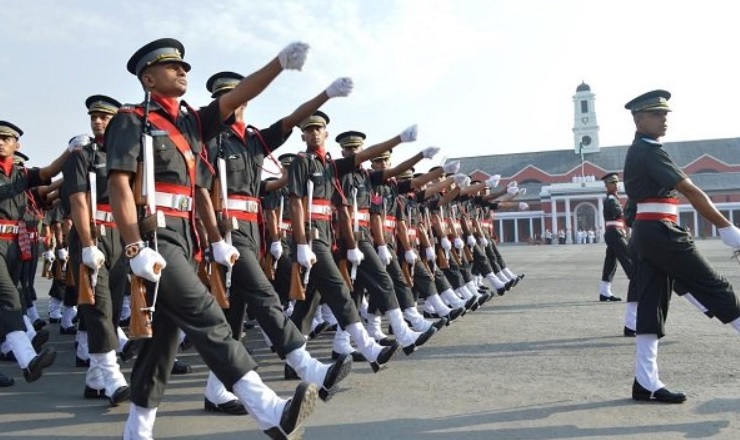
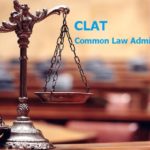




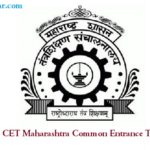
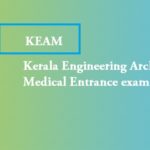
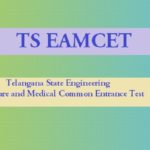

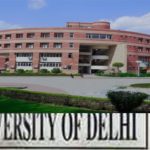
Hlo i am jatin goyal
Can I became a pilot through NDA
I am 15 years old,but I had also join the NDA army because he is my dream sir please support me please,and you are teach me and please give ideas for NDA army 1.This year I give paper class 10 in up board so, sir please dessuc me related by NDA army. Thanks 😊😊
Ya I also have filled the form
Ya I also fill the form of nda
Next time NDA forms kab aayega…
Sar mujhe bhi nda ka exam dena hai